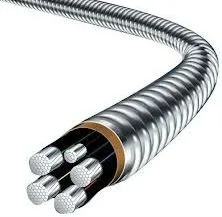Nov . 10, 2024 02:30 Back to list
Vulcanized Seat Flange Design for Enhanced Performance in Butterfly Valves
Understanding the Vulcanized Seat Flange Butterfly Valve
In various industrial applications, the significance of reliable and efficient flow control cannot be underestimated. Butterfly valves are prominent in this domain, and among them, the vulcanized seat flange butterfly valve stands out. This valve type combines functionality with durability, making it suitable for diverse environments and applications.
What is a Butterfly Valve?
A butterfly valve is a quarter-turn valve that utilizes a circular disc to control fluid flow. When the valve is closed, the disc is perpendicular to the flow, preventing any fluid from passing through. Conversely, when the valve is open, the disc is parallel to the flow, allowing fluids to move freely. Its simple design allows for quick operation, making it a favored choice for numerous industries, including water, wastewater, chemical processing, and HVAC systems.
The Role of the Vulcanized Seat
The seat of a butterfly valve is critical as it prevents leakage when the valve is closed. In a vulcanized seat flange butterfly valve, the seat material is subjected to a process called vulcanization. This process involves chemically altering the material to enhance its properties, such as durability, elasticity, and resistance to heat and chemical degradation.
Vulcanized rubber or elastomers are commonly used for the seat in these butterfly valves. The benefits of vulcanized materials include
1. Enhanced Sealing Performance The vulcanization process improves the material's ability to form a tight seal, which is essential in preventing leaks and ensuring efficient operation.
2. Resistance to Wear and Tear Vulcanized seats are more robust than standard rubber seats, providing longevity even under challenging operating conditions.
3. Chemical Resistance Many industrial applications involve harsh chemicals. Vulcanized materials can be tailored to resist a wide range of chemicals, making them suitable for corrosive environments.
4. Temperature Tolerance They can withstand high temperatures, allowing for their use in applications that involve heated fluids or gases.
vulcanized seat flange butterfly valve

Flange Connection Benefits
The flange connection of the vulcanized seat butterfly valve provides additional advantages. Flanges create a robust mounting point that facilitates easy installation and disassembly, which is crucial during maintenance. The standard sizes and pressure ratings of flanges ensure compatibility with existing piping systems, reducing installation costs and time.
Another significant advantage of flange connections is improved alignment. Proper alignment is vital for the valve to operate effectively and to prevent undue stress on the valve components, which can lead to premature failure. Flanged connections help maintain this alignment, ensuring proper function.
Applications
Vulcanized seat flange butterfly valves are used across various sectors due to their versatility. Some common applications include
- Water Treatment Plants These valves are frequently used in filtration and distribution systems to manage the flow of water.
- Chemical Industries In processes that involve corrosive substances, these valves provide the necessary durability and longevity.
- HVAC Systems They help regulate airflow and control temperatures in heating and cooling systems, ensuring optimal energy efficiency.
- Power Plants Used in cooling water systems, these valves help manage water flow effectively while withstanding the rigors of high temperature and pressure.
Conclusion
The vulcanized seat flange butterfly valve represents a significant advancement in flow control technology. With its unique combination of a vulcanized elastomer seat and a robust flange connection, this valve type offers superior sealing properties, enhanced durability, and versatility across a range of industrial applications. As industries continue to evolve and face new challenges, the demand for reliable and efficient valves will remain strong, making the vulcanized seat flange butterfly valve an essential component in modern fluid handling systems. Whether for water treatment, chemical processing, or power generation, this valve stands out as a reliable solution to meet the operational needs of today’s industrial landscape.
Share
-
Reliable Wafer Type Butterfly Valves for Every IndustryNewsJul.25,2025
-
Reliable Flow Control Begins with the Right Ball Check ValveNewsJul.25,2025
-
Precision Flow Control Starts with Quality ValvesNewsJul.25,2025
-
Industrial Flow Control ReliabilityNewsJul.25,2025
-
Engineered for Efficiency Gate Valves That Power Industrial PerformanceNewsJul.25,2025
-
Empowering Infrastructure Through Quality ManufacturingNewsJul.25,2025